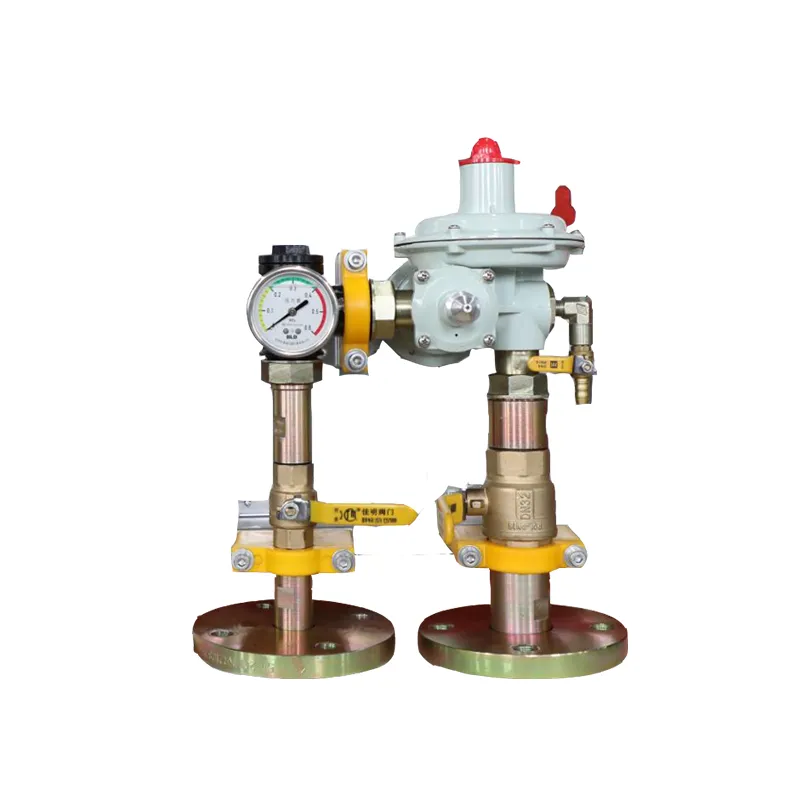
Nov . 09, 2024 09:35
Back to list
Understanding the Functionality and Applications of Pressure Reducing Regulators in Fluid Systems
Understanding Pressure Reducing Regulators An Essential Tool for Fluid Control
Pressure reducing regulators (PRRs) are critical components in a wide range of industrial and residential applications. These devices control and maintain the outlet pressure of gas or liquid regardless of the fluctuations in inlet pressure, ensuring a stable flow rate and preventing pressure surges that could lead to equipment damage or inefficiency.
How Pressure Reducing Regulators Work
At the core of a pressure reducing regulator is a diaphragm that responds to changes in downstream pressure. When the downstream pressure increases beyond the set point, the diaphragm moves to close the valve, thereby reducing the flow of the incoming fluid or gas. Conversely, if the downstream pressure drops below the set point, the diaphragm allows more fluid or gas to flow through the regulator, maintaining the desired outlet pressure. This self-regulating action is what makes PRRs vital for consistent performance in any system requiring precise pressure control.
Applications of Pressure Reducing Regulators
Pressure reducing regulators are employed in numerous scenarios. In residential settings, they are commonly used in natural gas systems, where they adjust the gas pressure delivered to appliances like stoves, heaters, and water heaters. Without adequate pressure regulation, appliances could malfunction or operate inefficiently, leading to increased energy consumption and potential safety hazards.
In industrial applications, PRRs play a crucial role in processes such as chemical production, water treatment, and oil and gas refining. In these environments, specific pressure levels are necessary to ensure safety, efficiency, and product quality. For example, a malfunctioning regulator in a chemical plant could lead to unsafe pressure levels, possibly resulting in leaks or explosions.
Types of Pressure Reducing Regulators
pressure reducing regulators

There are several types of pressure reducing regulators, each designed for specific applications. The most common types include
1. Spring-Loaded Regulators These are the simplest and most widely used types. They utilize a spring mechanism to maintain pressure, making them suitable for a wide variety of applications.
2. Pneumatic Regulators Often used in more complex systems where precise pressure control is necessary, pneumatic regulators can respond to a variety of input signals, making them versatile for various industrial applications.
3. Electronic Regulators These advanced regulators use electronic sensors and controllers to manage pressure with high accuracy. They are ideal for applications that demand stringent pressure control and can adjust rapidly to changing conditions.
Importance of Regular Maintenance
Like any mechanical system, pressure reducing regulators require regular maintenance to function effectively. Over time, the components of a PRR can wear down, leading to inaccuracies in pressure regulation. Organizations should establish a maintenance schedule that includes regular inspections and testing of the regulators to ensure optimal performance and longevity of the device.
Conclusion
Pressure reducing regulators are integral to maintaining safe and efficient operation in numerous applications, from household appliances to complex industrial systems. Understanding how these devices work and their critical role in pressure control can help users appreciate their significance. Proper selection, installation, and routine maintenance of PRRs will not only enhance operational reliability but also contribute to the overall safety and efficiency of fluid handling systems. As technology evolves, we can expect advances in PRR design and functionality, providing even greater precision and reliability in pressure management.
Latest news
-
Safety Valve Spring-Loaded Design Overpressure ProtectionNewsJul.25,2025
-
Precision Voltage Regulator AC5 Accuracy Grade PerformanceNewsJul.25,2025
-
Natural Gas Pressure Regulating Skid Industrial Pipeline ApplicationsNewsJul.25,2025
-
Natural Gas Filter Stainless Steel Mesh Element DesignNewsJul.25,2025
-
Gas Pressure Regulator Valve Direct-Acting Spring-Loaded DesignNewsJul.25,2025
-
Decompression Equipment Multi-Stage Heat Exchange System DesignNewsJul.25,2025

